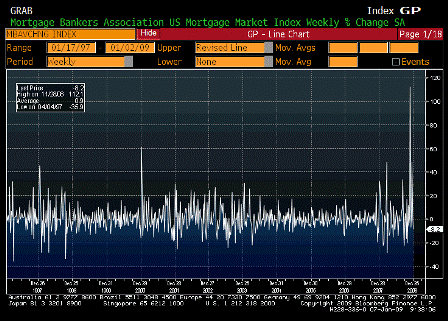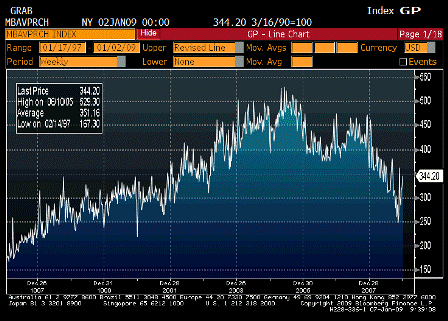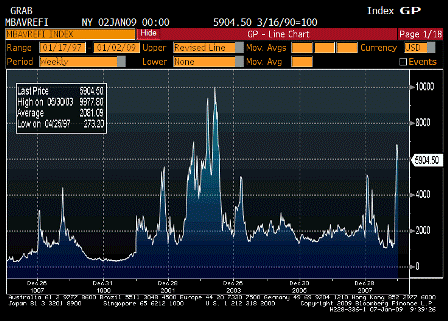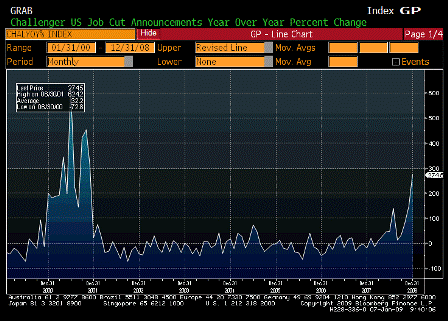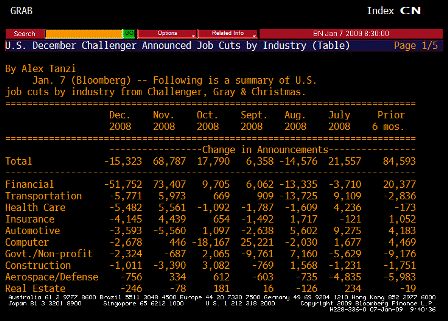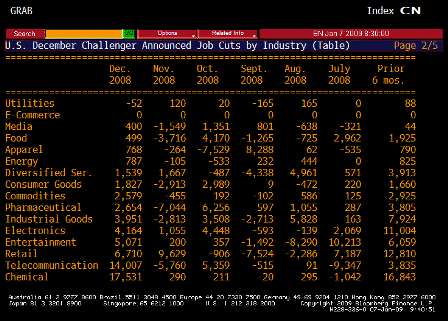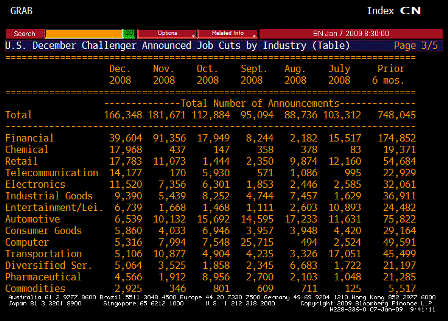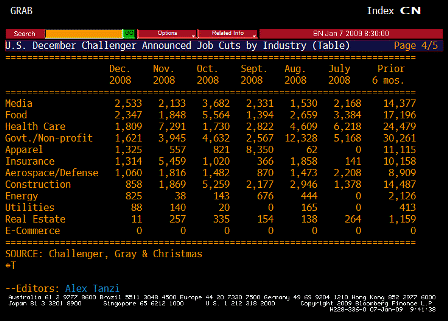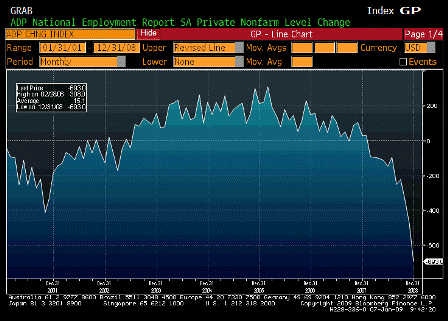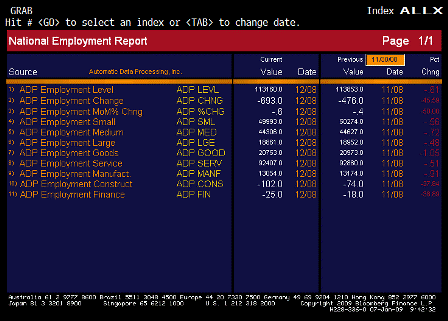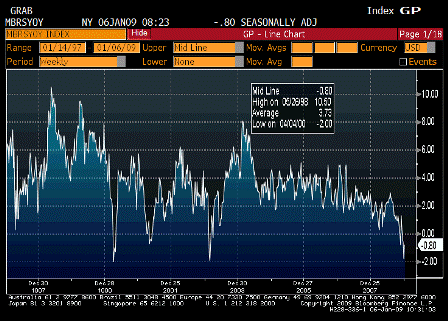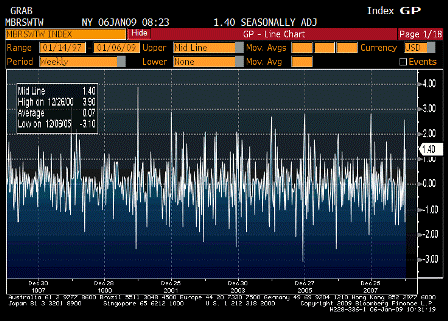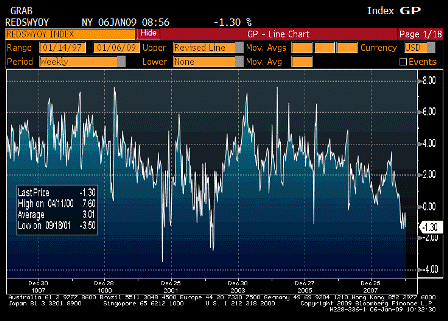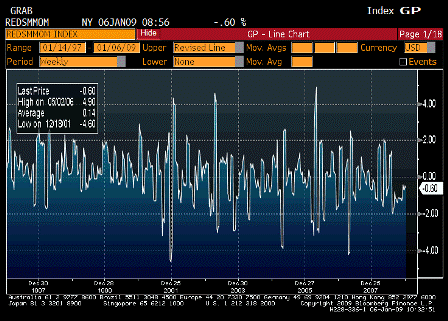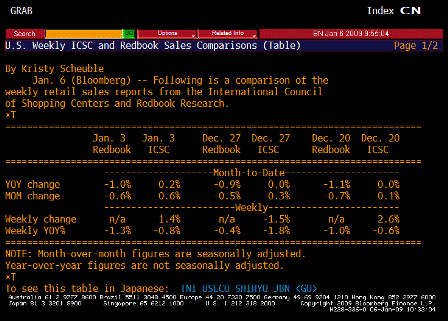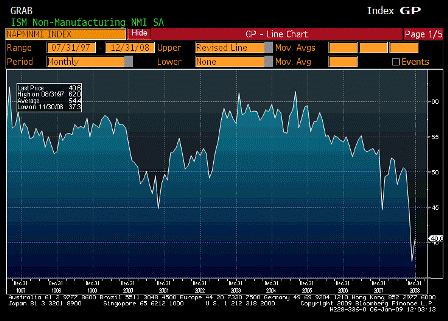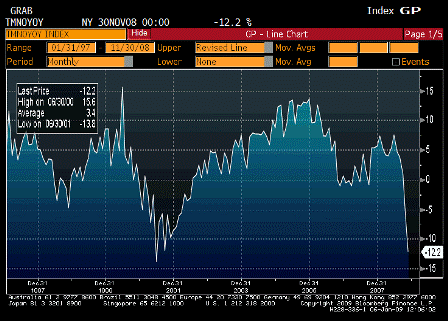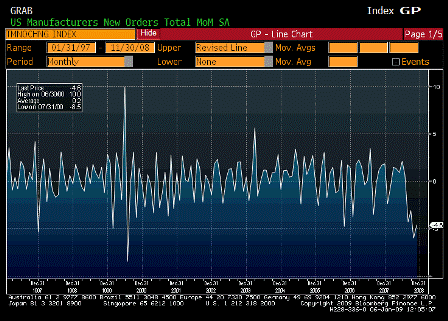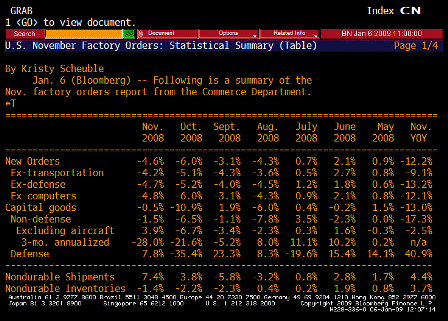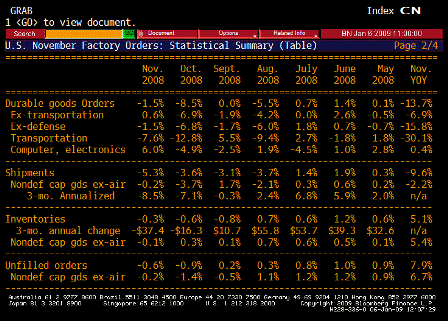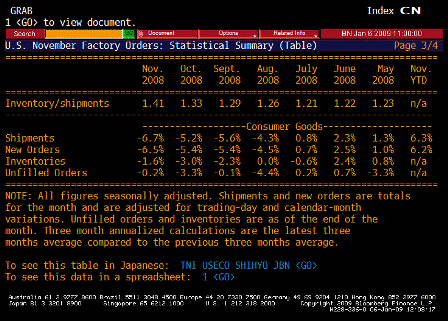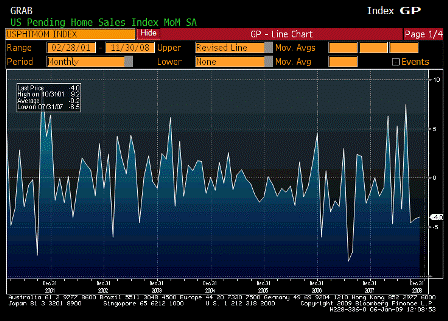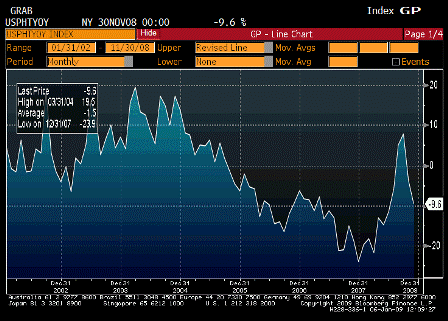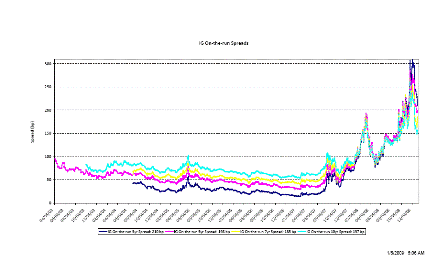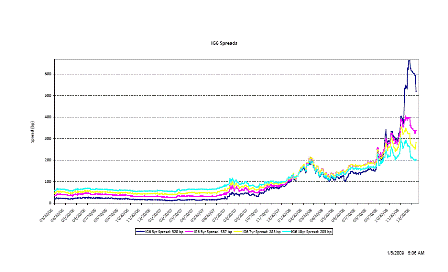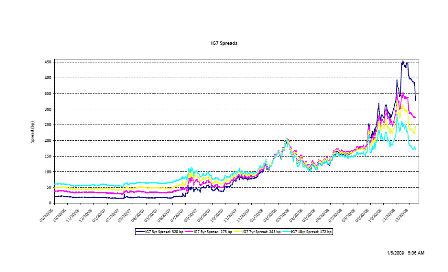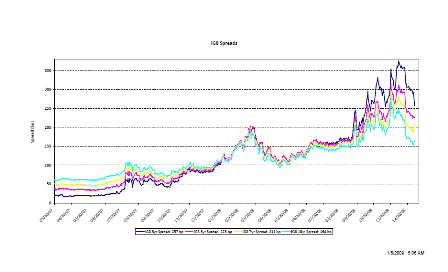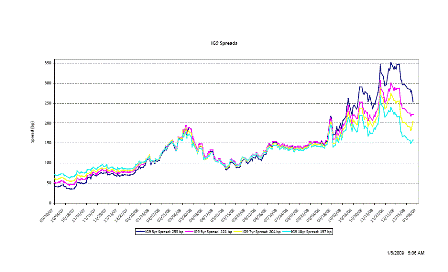Contraction for all of 2009 and core inflation to fall through 2010.
In the forecast prepared for the meeting, the staff revised down sharply its outlook for economic activity in 2009 but continued to project a moderate recovery in 2010. Real GDP appeared likely to decline substantially in the fourth quarter of 2008 as conditions in the labor market deteriorated more steeply than previously anticipated; the decline in industrial production intensified; consumer and business spending appeared to weaken; and financial conditions, on balance, continued to tighten. Rising unemployment, the declines in stock market wealth, low levels of consumer sentiment, weakened household balance sheets, and restrictive credit conditions were likely to continue to hinder household spending over the near term. Homebuilding was expected to contract further. Business expenditures were also likely to be held back by a weaker sales outlook and tighter credit conditions. Oil prices, which dropped significantly during the intermeeting period, were assumed to rise over the next two years in line with the path indicated by futures market prices, but to remain below the levels of October 2008. All told, real GDP was expected to fall much more sharply in the first half of 2009 than previously anticipated, before slowly recovering over the remainder of the year as the stimulus from monetary and assumed fiscal policy actions gained traction and the turmoil in the financial system began to recede. Real GDP was projected to decline for 2009 as a whole and to rise at a pace slightly above the rate of potential growth in 2010. Amid the weaker outlook for economic activity over the next year, the unemployment rate was likely to rise significantly into 2010, to a level higher than projected at the time of the October 28-29 FOMC meeting. The disinflationary effects of increased slack in resource utilization, diminished pressures from energy and materials prices, declines in import prices, and further moderate reductions in inflation expectations caused the staff to reduce its forecast for both core and overall PCE inflation. Core inflation was projected to slow considerably in 2009 and then to edge down further in 2010.
Policy..low for long plus nontraditional
They agreed that maintaining a low level of short-term interest rates and relying on the use of balance sheet policies and communications about monetary policy would be effective and appropriate in light of the sharp deterioration of the economic outlook and the appreciable easing of inflationary pressures. Maintaining that level of the federal funds rate implied a substantial further reduction in the target federal funds rate. Even with the additional use of nontraditional policies, the economic outlook would remain weak for a time and the downside risks to economic activity would be substantial. Moreover, inflation would continue to fall, reflecting both the drop in commodity prices that had already occurred and the buildup of economic slack; indeed some members saw significant risks that inflation could decline and persist for a time at uncomfortably low levels.
With some talk of abandoning a target altogether…
A few members stressed that the absence of an explicit federal funds rate target would give banks added flexibility in pricing loans and deposits in the current environment of unusually low interest rates. However, other members noted that not announcing a target might confuse market participants and lead investors to believe that the Federal Reserve was unable to control the federal funds rate when it could, in fact, still influence the effective federal funds rate through adjustments of the interest rate on excess reserves and the primary credit rate. The members decided that it would be preferable for the Committee to communicate explicitly that it wanted federal funds to trade at very low rates; accordingly, the Committee decided to announce a target range for the federal funds rate of 0 to 1/4 percent.
[top]

